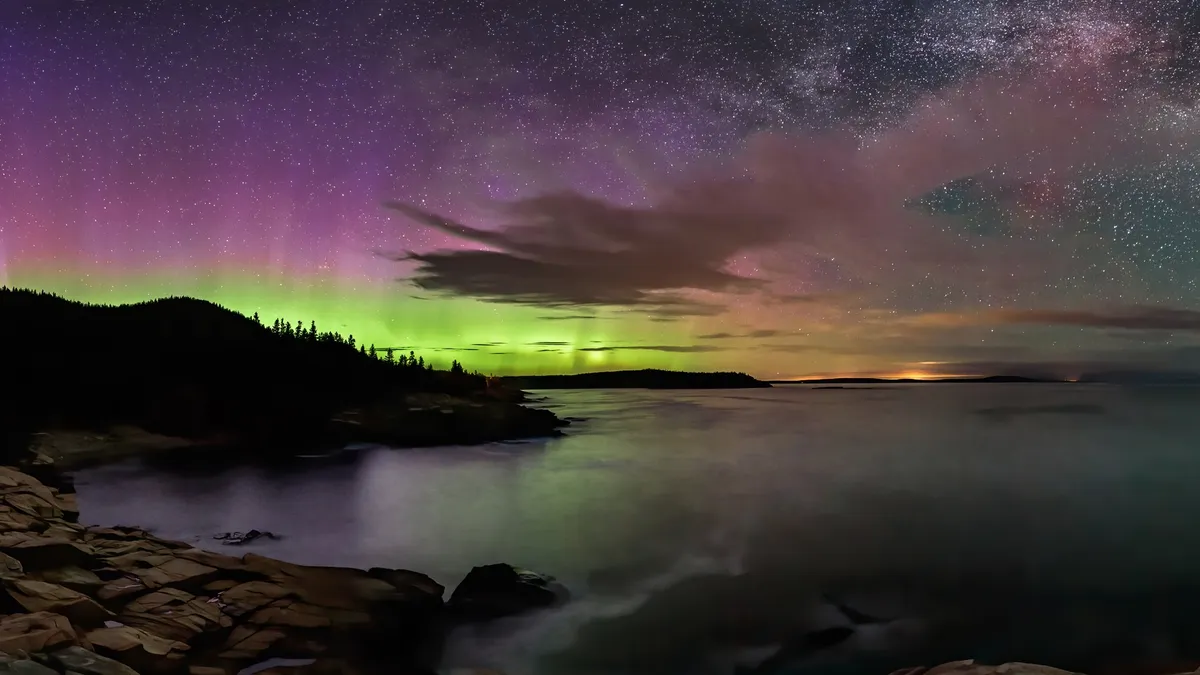
Attention, aurora chasers! Mark your calendars for the night of June 25, as a significant solar event is on the horizon. A stream of solar wind emanating from a coronal hole on the sun is projected to ignite G1 to G2 (Minor to Moderate) geomagnetic storms, which could lead to breathtaking aurora displays visible across 14 U.S. states. The NOAA's Space Weather Prediction Center (SWPC) has indicated that the Kp index—a key measure of geomagnetic activity—is expected to peak at a remarkable 5.67, categorizing it as a moderate G2 storm.
The Kp index ranges from 0 to 9, with higher numbers indicating more intense auroral activity. Under these anticipated conditions, the auroral oval may extend far enough south for residents in states like New York, Oregon, and South Dakota to catch a glimpse of the northern lights, particularly from locations with minimal light pollution. For real-time updates, be sure to check our aurora forecast live blog for the latest geomagnetic storm warnings and forecasts.
The UK Met Office has also chimed in, noting that while overall solar activity remains relatively low, a swift solar wind is set to arrive late on June 25, significantly enhancing the potential for auroras at high latitudes. However, with the June solstice approaching, short nights and lingering twilight could limit visibility in certain regions.
If you're wondering where to see the northern lights on June 25, Alaska boasts the highest likelihood of witnessing this spectacular phenomenon. If the predicted G2 storms come to fruition, auroras may be visible as far south as New York and Idaho, with NOAA suggesting that the effect could extend even further. Below is a list of the 14 states that may experience auroras tonight, ordered from most likely to least likely based on their proximity to the center of the auroral oval:
Alaska Minnesota North Dakota Montana Maine Michigan Wisconsin Vermont New Hampshire Washington Oregon Idaho New York South DakotaWhile the forecast looks promising, keep in mind that auroras can be unpredictable. They may appear much further south than anticipated or might not be visible at all. A variety of conditions must align to create the perfect show. Therefore, it is possible that even more states could witness auroras tonight, or conversely, fewer may be lucky enough to see them. Good luck to all aurora chasers!
If you reside in one of the 14 states with a chance of viewing the northern lights tonight, head to a north-facing vantage point that is as far away from light pollution as possible. The optimal time for viewing the auroras will be around 1 a.m. local time, as the window of darkness for observing these stunning lights diminishes during the summer months. Prepare for an unforgettable night of celestial wonder!